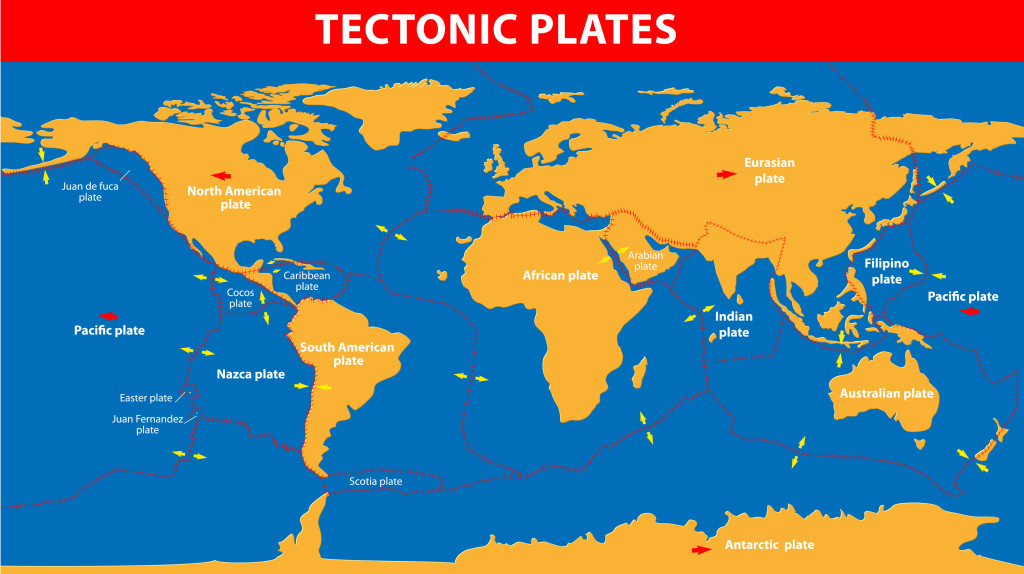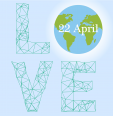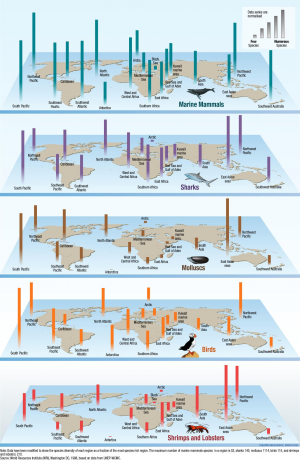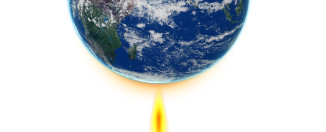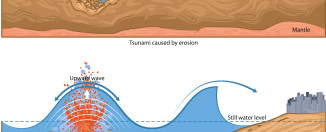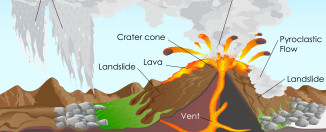Tectonic Plates
Have you ever looked at a world map and thought that South America and Africa look like they would fit together like puzzle pieces? At one time in the past, they actually were stuck together! This was one idea that helped scientists understand tectonic plates.
The top surface of the earth, the crust and upper mantle, is separated into different plates which can be anywhere between 15 km to 200 km thick. These massive bodies of rock get bigger on some edges when new rock is added to them at seafloor spreading zones.
At other edges, where they run directly into other plates, they can get pushed back deep into the earth where they melt (the melted rock can come back up to the surface, producing volcanoes). This process keeps rolling along like a conveyor belt, pushing plates into each other, and scraping past each other, at a rate of a few centimeters each year. In places where plates run into each other, the collisions cause earthquakes.
There are about 7 or 8 major tectonic plates, and many other small ones. Most of the continents are on single plates, called continental plates, and the plates under the ocean are called oceanic plates. The rocks under the ocean are usually heavier types than the rocks on land, plus the weight of the ocean also counts, so most oceanic plates are thin while continental plates can be up to 200km thick.
If a continental plate meets an oceanic plate, it usually rides over top while the heavy oceanic plate goes down. When two continental plates meet head on, like the Indian plate hitting the Eurasian plate, they can both crumple and push up high mountains like the Himalayas.
Find out more about moving ships through locks!

